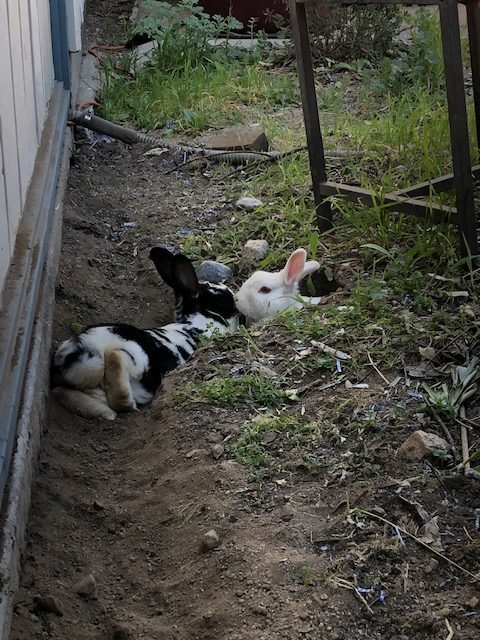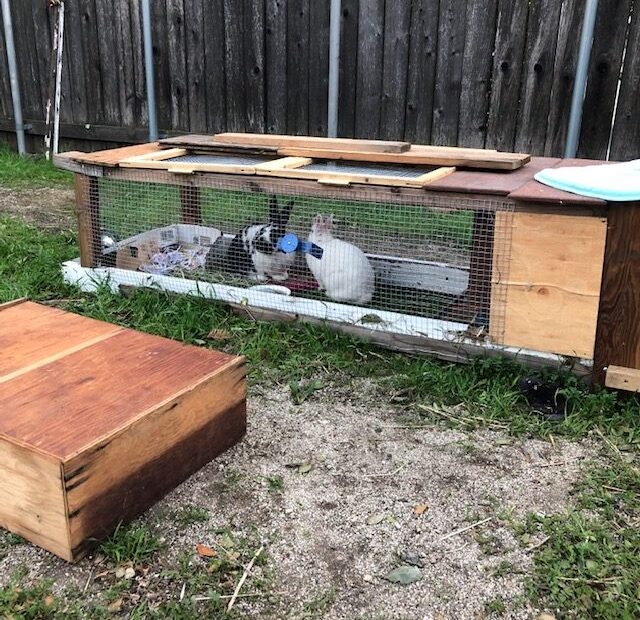My interest in reducing my emissions led to an interest in gardening. I have no interest in buying bags of dirt and toting them home on my bicycle, so I researched other ways to build my soil. I started a compost pit, and I decided to adopt a rabbit that needed a home. Why? Rabbit poop and horse poop are instant fertilizer that need no composting. Also, rabbits make excellent lawnmowers and are pretty cute pets.
I found Pongo on my local shelter’s person to person adoptions. He’s neutered and micro chipped and is such a good and kind of goofy bunny. We soon added Narvi, who I found on Craigslist. Her family’s new apartment wouldn’t allow them to keep her, so I let them know they could bring her here to live with Pongo. Pongo has been overjoyed ever since. They have built a warren together and spend hours snuggling and grooming one another.
When I built this bunny tractor I didn’t yet know that they would be able to free range all day, but it’s still useful at night. We lock them up and keep them safe, and they can still snack and sleep on natural ground. The bunnies make excellent lawn mowers and have had no health problems. They also get plenty of hay. Our “lawn” is not really a lawn. It’s the natural vegetation, or “weeds” that grow naturally here like dandelion and mallow. Even the actual, invasive weeds I have identified are rabbit friendly, like henbit, with it’s pretty purple flowers.
I built the rabbit tractor out of materials I already had on hand. The only things I bought were hinges and hardware cloth. You need to use hardware cloth (with half inch holes) and a quality staple gun with very long staples to protect the bunnies or chickens from raccoons. Raccoons are incredibly strong and dexterous.
Constructing the Rabbit Tractor
I spent some time studying the materials I had on hand and thinking about my project. The night before I began, I made this sketch. Some things change during building. I decided to put 2 canvas frame doors on the top, rather than one on the side.

First, I attached long 2x4s to a sturdy old redwood drawer using screws. Those canvas stretcher bars on top of the drawer here will make the doors.

Here, the tractor is on its side, and I have filled out the frame with 4 long pieces of wood. One piece wasn’t quite long enough, so I extended it with a metal plate I had on hand (bottom right).


Next, I stapled on the hardware cloth and screwed boards over the top and sides to extend the sheltered area. The shelter is a few inches above the ground to protect the bunnies during rainy time, but also, to provide a small roost should I ever get to use it as a chicken tractor.
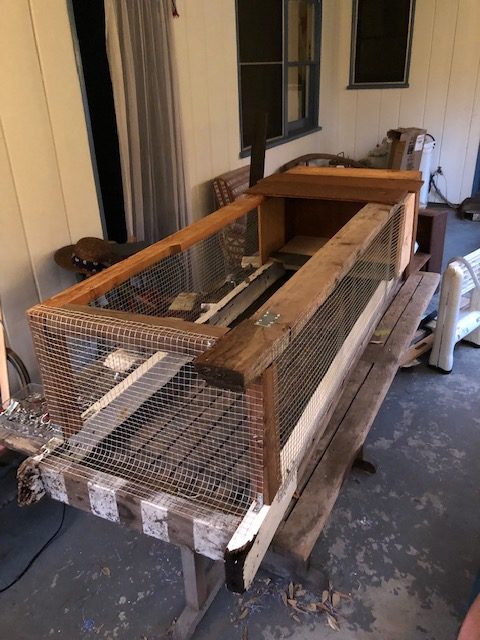
I attached my son’s old training wheel with some unnecessarily strong braces that came with IKEA curtain rods.

I covered the bottom with larger fencing so the grass can still come through the bottom. The hutch is on its side and Pongo is inspecting it. Bunnies like to inspect whatever we work on.


Narvi inspects the new tractor handles.
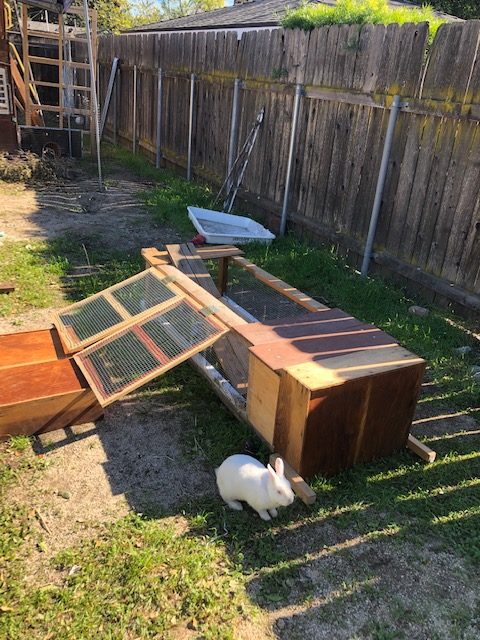
When they want to go home, they hop down the ramp inside the tractor. It took a few weeks, but now we are settled into a routine. Around 5pm, the bunnies tell me they want to go home by sniffing around their hutch. I lure them in by giving them rabbit crunchies and fresh hay, fresh water and litter box. The little box isn’t necessary, but they like it, and it makes it easy to collect and apply the fresh fertilizer they make.

If you look closely, you will see that we put Pongo’s house inside the little protected area of the rabbit tractor. And we built a ramp so the bunnies can climb up the doors and step down the ramp to go home at night. We lure them with rabbit crunchies and fresh hay and are usually successful.
They still have room to hop around in there, and it’s much larger than the cage many rabbits spend their lives in. Besides, it’s only for the evening.
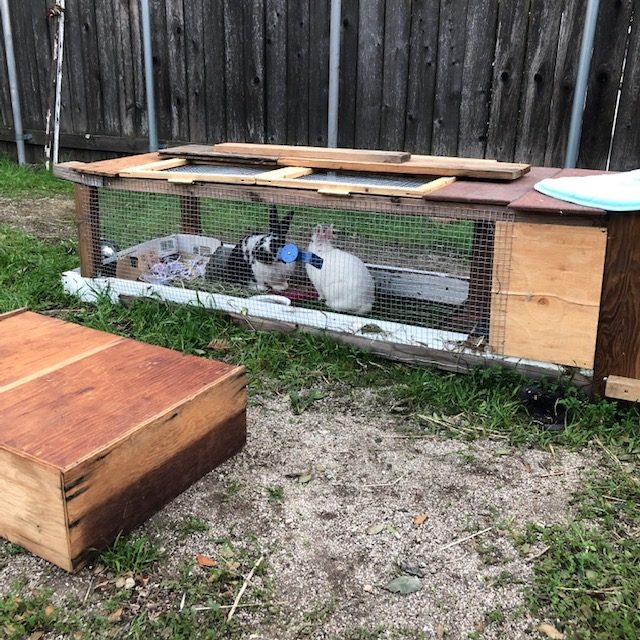
During the day, they have the whole yard and their warren.
